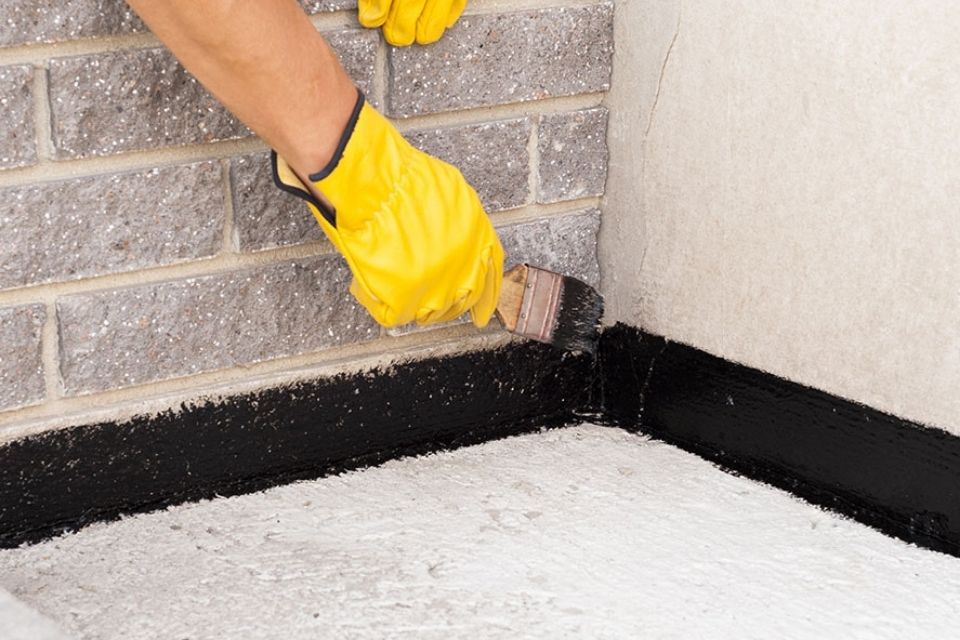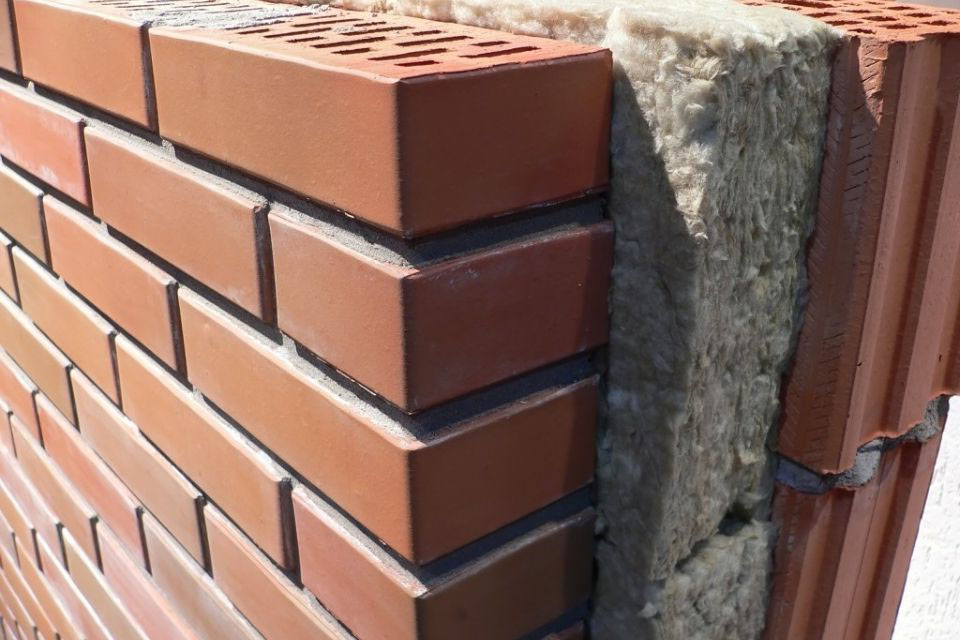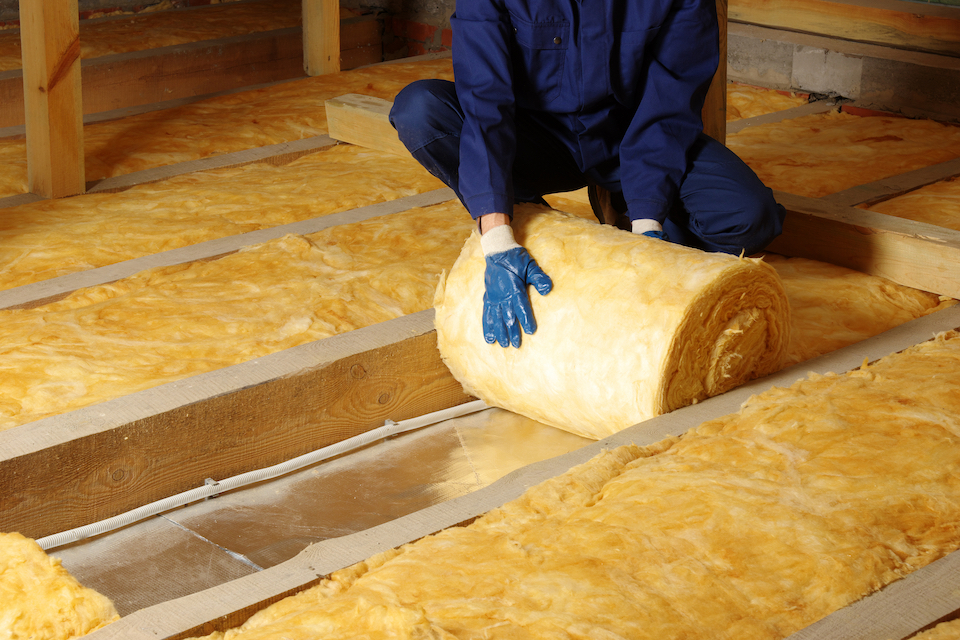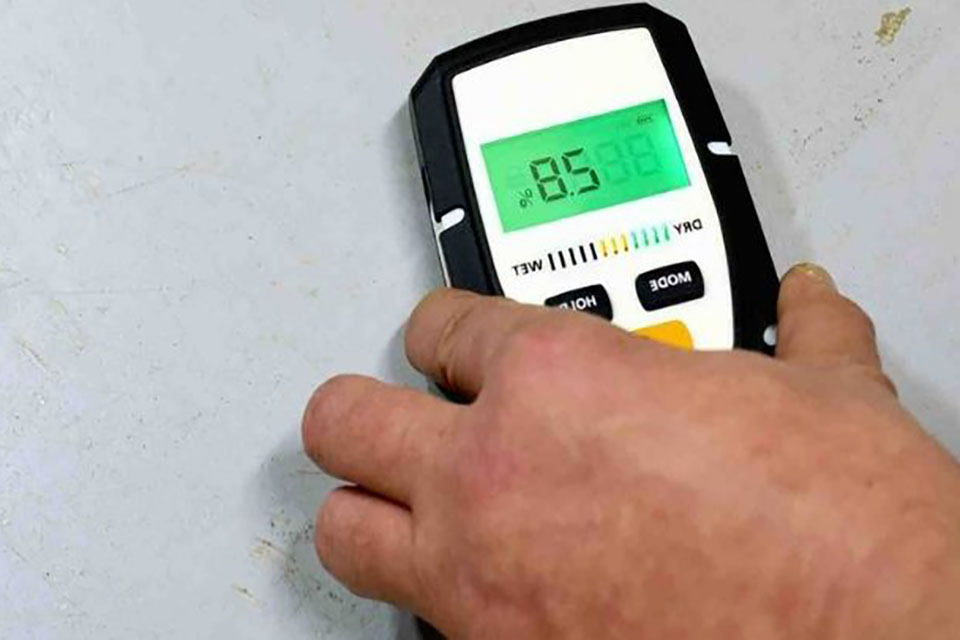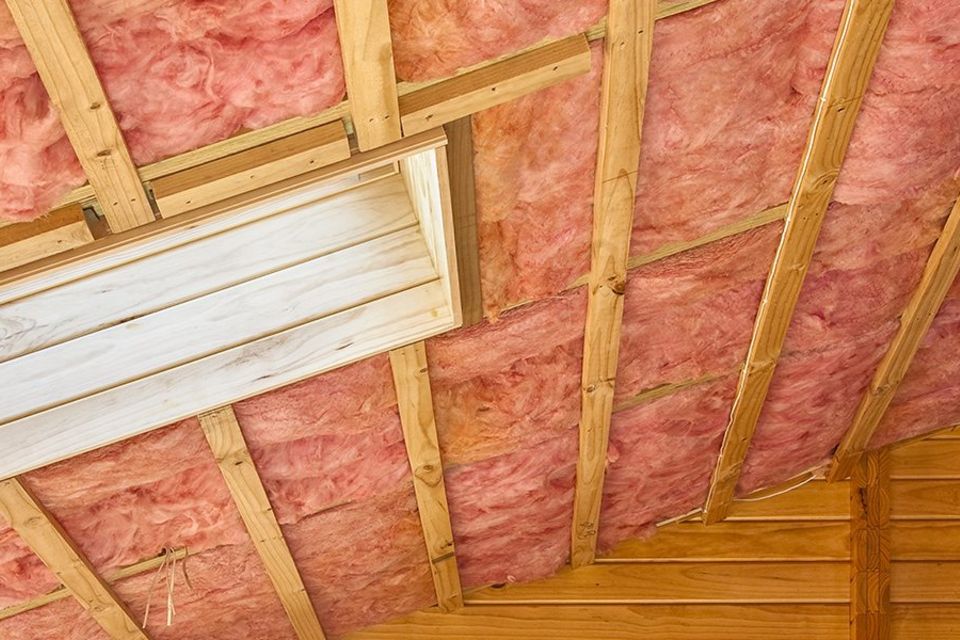How Much Does a Damp Proof Course Cost?
The average cost of a damp proof course is usually between £800 and £3,500, with the price range varying depending on the size and type of property as well as the method used. There may also be slight regional variances, due to labour fees being higher in areas such as London and the South East.
What exactly is damp proofing?
Damp proofing is a general term used to describe all of the available methods of preventing damp from being absorbed through the structural properties, floors, and walls of a property's interior.
What happens if you don't treat damp?
If you leave damp for too long, it can eventually rot and can cause a lot of structural damage to your property. This is why a damp course is so important. Any damp patches should be taken care of as soon as possible.
When a property is built, it is usually constructed with a preventative damp proof course built into the walls.
What happens when you hire a damp proofing professional?
If you hire a professional to damp proof your home, they will usually do a few things such as inspect the walls, check the existing damp course, plaster the walls, administer a damp course injection, add waterproof render – these are just a few examples of what is usually included in a typical damp proof job.
So how much will all this cost?
The average cost to damp proof your home usually falls around £300-£2,500. However, the overall cost that you can expect to pay will depend on various factors, including your home’s size and your location in the UK. The typical cost for different types of damp proof courses can vary, so it's important to get a detailed quote.
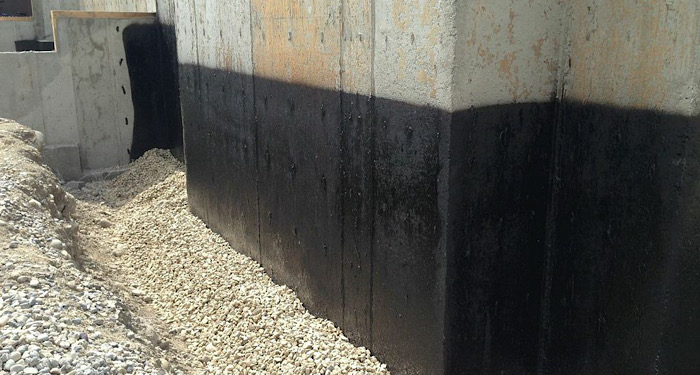
If you are looking to damp proof masonry, brick, or concrete walls, a good method is to apply a tanking slurry. This is a waterproof coating that is made up of cement and acts as a barrier between any damp particles and your home structure.
How much does a tanking slurry cost?
Tanking slurry is most commonly found in basements, although they also work very well on the upper floors. If you wanted a professional to come in and apply a tanking slurry, this would usually cost around £30-£60 per square metre.
What other damp proofing options are there?
Another option you may wish to consider is having your interior walls re-plastered using a waterproof plaster mix. The average cost for this type of work is around £200-£400 per room, depending on the size of the room and your location in the UK.
How long will damp proofing take?
Depending on how much work needs to be done, damp-proofing can take anywhere from 1 day to a week on average to complete. Re-plastering can be a messy job, so it is sometimes a good idea for you to move out while you're getting the work done.
Damp Proofing Prices
Below is a table highlighting the average costs for different types of damp proofing prices:
| TYPE OF JOB | AVERAGE COST |
|---|---|
| Damp course – Terraced house | £800-£1,200 |
| Damp course – Semi-detached house | £1,500-£2,500 |
| Damp course – Detached house | £2,500-£3,500 |
| Tanking slurry – Terraced house | £2,450-£3,500 |
| Tanking slurry – Semi-detached house | £2,800-£3,800 |
| Tanking slurry – Detached house | £4,560-£6,000 |
| Re-plaster – Terraced house | £1,200-£1,800 |
| Re-plaster – Semi-detached house | £1,800-£2,400 |
| Re-plaster – Detached house | £2,400-£3,000 |
- How Much Does a Damp Proof Course Cost?
- Understanding Damp Proofing
- What are the Supply Costs of Damp Proofing?
- What are the Additional Costs of Damp Proofing?
- Tradesmen Costs for Damp Proofing
- How Long Does Damp Proofing Take?
- Types of Damp Problems
- Identifying Damp Issues
- Types of Damp Proofing
- Is DPC Different in the Construction Industry?
- Benefits of Damp Proofing
- FAQs
- Sources
Understanding Damp Proofing
Damp proofing is a crucial process that prevents moisture from entering a building, thereby protecting it from structural damage and health problems caused by mould.
It involves the application of various techniques and materials to prevent moisture ingress, ensuring a dry and healthy indoor environment.
Definition of Damp Proofing
Damp proofing refers to the process of preventing moisture from entering a building through various means, including the application of damp proof courses, membranes, and coatings.
It is an essential aspect of building construction and maintenance, as it helps to prevent structural damage, health problems, and damage to furniture and belongings.
By implementing effective damp proofing measures, you can safeguard your property against the detrimental effects of moisture, ensuring its longevity and maintaining a comfortable living environment.
Importance of Damp Proofing
Damp proofing is essential for several reasons:
- Prevents Structural Damage: Moisture can weaken the structural integrity of a building, leading to costly repairs. Damp proofing helps to prevent this by keeping the building dry.
- Prevents Health Problems: Mould and mildew thrive in damp conditions, which can cause respiratory issues and other health problems. Damp proofing eliminates these risks.
- Increases Property Value: A well-maintained, damp-free property is more attractive to potential buyers, increasing its market value.
- Reduces Maintenance Costs: By preventing damp-related issues, you can save on future repair and maintenance costs.
- Improves Indoor Air Quality: Damp conditions can lead to poor air quality. Damp proofing ensures a healthier indoor environment.
- Prevents Damage to Furniture and Belongings: Moisture can damage furniture, electronics, and other personal items. Damp proofing protects your possessions.
- Reduces Risk of Pest Infestations: Damp environments can attract pests such as termites and rodents. Keeping your home dry helps to deter these unwanted guests.
- Improves Overall Property Condition: Damp proofing maintains the overall condition of your property, making it a more pleasant place to live.
- Increases Energy Efficiency: Damp walls can make a home feel colder, leading to higher heating costs. Damp proofing helps to maintain a consistent indoor temperature.
- Enhances Property’s Aesthetic Appeal: Damp can cause unsightly stains and damage to walls and ceilings. Damp proofing keeps your home looking its best.
What are the Supply Costs of Damp Proofing?
There are only a few damp proofing options that you could carry out on your own. Most damp proofing jobs will need to be completed by a professional contractor, and it's important to consider the proofing costs involved.
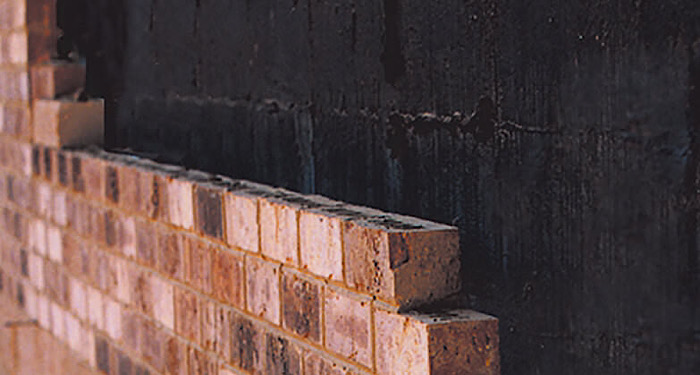
If you were looking to attempt DIY damp proofing, you might need the following materials:
- Damp Proofing Injection Cream - £5-£7 per 100ml
- Anti-mould/moisture/damp proofing paint - £20-£45 per tub
If you are hiring a professional contractor to carry out the work for you, they will usually use specialist materials. These materials are usually incorporated into the price of the job as a whole.
What are the Additional Costs of Damp Proofing?
When it comes to damp proofing, there are some additional costs that you may wish to consider with the job. These additional costs can include things that help prevent further damp in the future, or things that can improve the room after the existing damp has been taken care of.
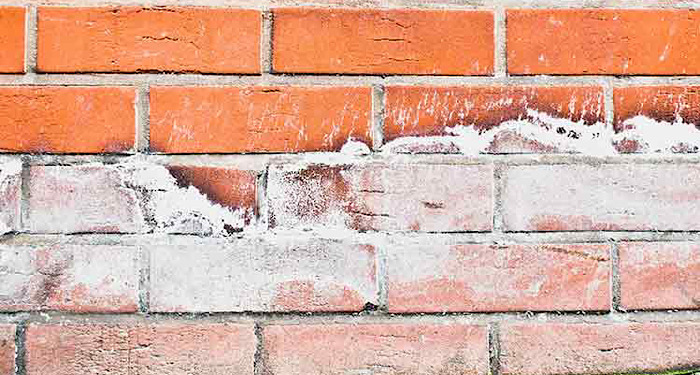
Conducting a damp survey is crucial for accurately identifying the source of damp issues in properties. Hiring an independent surveyor for a damp survey can be a cost-effective solution in the long run, as it leads to precise recommendations and avoids unnecessary expenses related to ineffective treatments.
Below is a table of the average additional costs that you may need to consider with this type of work:
| ADDITIONAL COST | AVERAGE COST |
|---|---|
| Extractor fan | £150-£250 |
| Dehumidifier | £100-£400 |
| Leaking roof repair | £75-£150 per m² 2 |
| Replacement gutters | £400-£1,500 |
| Resealing windows | £25-£75 per window |
| Resealing doors | £80-£100 per door |
| New doors | £165-£7,500 per door |
| Window replacement | £250-£3,000 per window |
Tradesmen Costs for Damp Proofing
A professional damp proofer will usually charge an average daily fee of around £100-£200. The amount of time that it takes to complete the work will depend on several factors, including the size of your home and the extent of the job.
Depending on these factors, damp proofing can take anywhere from around 1-5 days to complete.
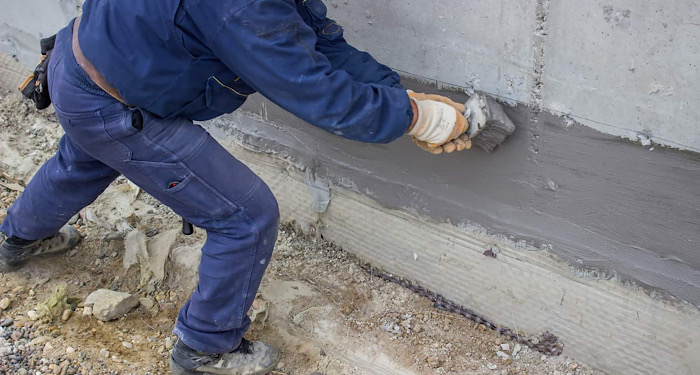
Labour costs tend to be higher in London and the South East compared to the rest of the UK. If you are based in these areas, expect to pay an additional £30–£70 per day on average for labour due to the higher cost of living.
How Long Does Damp Proofing Take?
The time it takes to complete the job will depend upon the type of damp proofing and your home's size. The damp proof course itself can usually be completed within a day. However, the contractor will then need to re-plaster the home, and this can take a few days to complete.
If a tanking slurry is needed to repair the damp, this can take a minimum of 2 days to complete as it needs a drying time of at least 24 hours between each coat. If you are having damp proof paint applied to the rooms in your home, this can take around 6-12 hours per room.
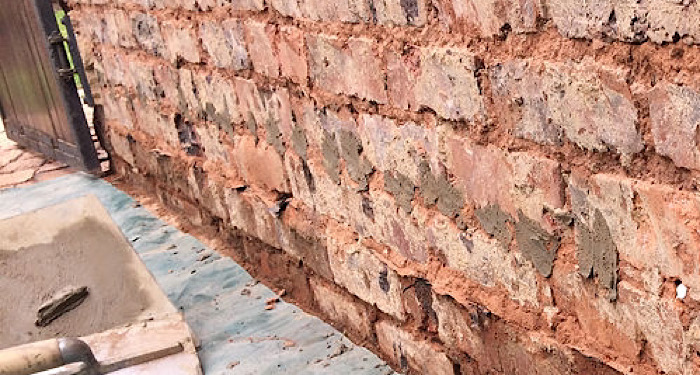
On some more extreme cases, your home may need to be rendered to prevent damp. This can take around 4-14 days on average to complete depending on your home's size.
Types of Damp Problems
Condensation, rising damp, and penetrating damp are the three most common types of damp that can affect residential properties. Each type of damp will need to be treated differently.
Below is some information on each of the different types of damp that could be affecting your home:
Condensation
Condensation is the number one most common type of damp issue in homes in the UK. This type of damp is caused by moist, warm air condensing on walls that are a cooler temperature. This is most common in rooms that naturally generate a lot of air moisture such as bathrooms and kitchens.
It most commonly becomes an issue in wintertime when the walls tend to be colder. However, it can be a problem in the summer months, too.
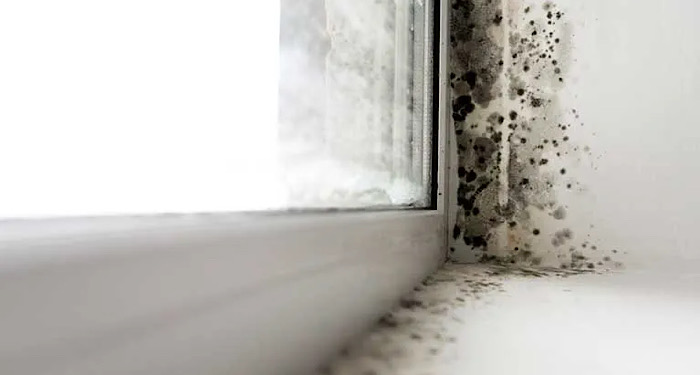
Damp problems as a result of condensation can often be linked to central heating, as it heats air that then cools down to create a warm, moist air that condenses on cooler surfaces. Insufficient ventilation in the home can also make this issue worse.
If left untreated, condensation can cause your window and door frames to decay and can damage the paint and plaster on your walls. If you see condensation forming in your home, you should always wipe it away.
Symptoms of condensation damp problems include the following:
- The appearance of dark mould – especially around windows or on glass
- An unpleasant smell of mould.
- Water droplets appearing on the walls or windows
Rising Damp
Rising damp is caused by groundwater that rises through a wall or floor. Walls will naturally allow a little bit of water in. However, this usually doesn't cause damage due to a damp-proof course or a damp-proof membrane.
Modern homes tend to have damp-proof courses and damp-proof membranes built-in, although this can still depend on the age of the property and may not be the same in all areas of the UK. With this in mind, rising damp tends to be more common in older homes.
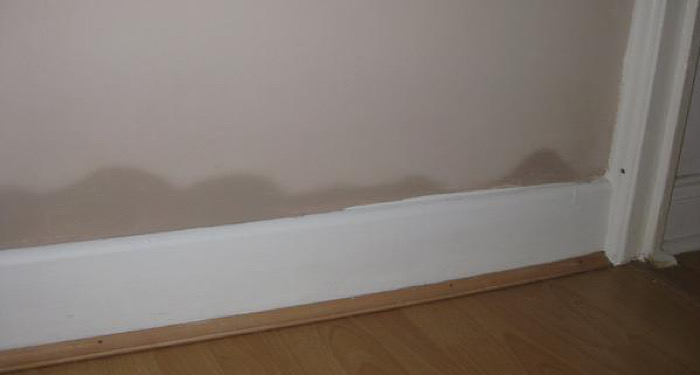
Rising damp can also become a problem when there is a lack of drainage or when the level of the ground outside your home sits higher than your damp-proof course as this will allow water to get above it.
Symptoms of rising damp problems include the following:
- Paint and wallpaper starts peeling, often with wet patches
- Floor coverings may start to lift up
- Tide marks that rise up the wall
- Damage to plaster
- Damage to skirting boards
- A white, powdery substance on the wall due to soluble salt dissolved particles
Penetrating Damp
Penetrating damp occurs when water leaks through the external walls. This type of damp can expand across the walls and the ceiling. It is usually caused by structural problems in the building.
When your home has cracks in the walls or ceiling or problems with the roof or guttering, this can cause penetrating damp. When there are structural issues with the home, water can enter through cracks or leaks when it rains. Penetrating damp can also be caused by internal issues such as leaking pipes.
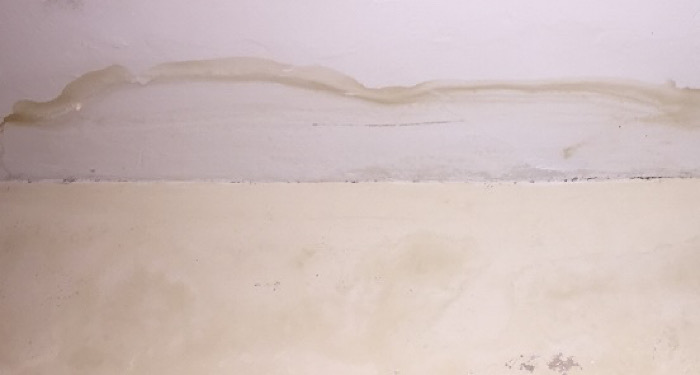
Older buildings are more prone to penetrating damp than newer buildings as newer buildings are often built with cavities in the wall to protect against damp.
Symptoms of penetrating damp problems include the following:
- Damp patches on the wall which may become darker when it rains
- Damp patches on the ceiling which may become darker when it rains
Identifying Damp Issues
Identifying damp issues is crucial to prevent further damage and health problems. Here are some common signs of damp:
- Water Stains or Discoloration on Walls and Ceilings: These are often the first visible signs of damp. Look for patches that are darker than the surrounding area.
- Peeling Paint or Wallpaper: Damp can cause paint and wallpaper to lose adhesion, leading to peeling or bubbling.
- Musty Odors: A persistent musty smell is a clear indicator of damp and mould.
- Mold or Mildew Growth: Visible mould or mildew, especially in corners or behind furniture, is a sign of excessive moisture.
- Warped or Rotting Wood: Check for wood that feels soft or has started to warp, as this can indicate damp.
- Crumbling Plaster or Render: Damp can cause plaster and render to deteriorate, leading to crumbling or flaking.
- Damp Patches on Walls or Floors: These patches may feel cold or wet to the touch and can vary in size.
- Condensation on Windows or Walls: Excessive condensation, especially in the mornings, can be a sign of poor ventilation and damp issues.
By being vigilant and recognizing these signs early, you can take the necessary steps to address damp problems before they escalate, ensuring a safe and comfortable living environment.
Types of Damp Proofing
There are several different ways that damp can be treated. Here are some details on each of the different methods:
Damp Proof Course
A damp proof course (DPC) is a form of damp proofing installed in a property to prevent damp problems from occurring.
Installing a new damp proof course is crucial for preventing moisture damage in buildings. There are a number of different methods of installing a damp proof course; however, the most common method is a damp proof injection.
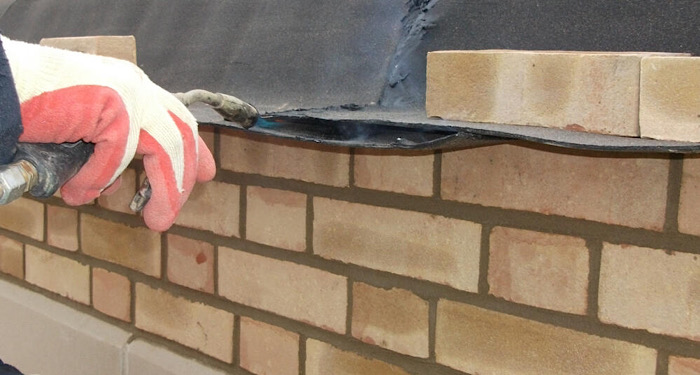
A damp proof injection treatment involves the injection of a damp proof cream made up of a silicone-based liquid. This liquid then reacts with the silica in the masonry to produce a layer within the wall that repels water.
Pros:
- Usually the cheapest of the options available
- Inserts a damp proof solution to your walls to prevent any further damage
Cons:
- A DPC injection cannot be used on all properties
Tanking Slurry
Tanking slurry is a relatively big job as it involves removing all of the plaster, debris, paint, and other materials from the wall surface. A salt neutraliser is then applied to the wall surface to prevent any existing salts in the wall from affecting the new tanking.
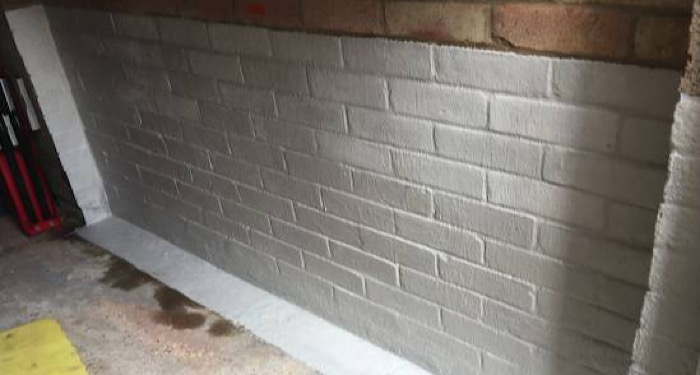
The wall is then dampened slightly, and holes are filled with cement, mortar, and a waterproofer. The wall is then dampened again before a tanking slurry is applied.
This needs to be left for 24 hours before another coat is added. The wall can then be re-plastered and decorated after the second coat is completely dried.
Pros:
- Great option for basements or upper floors
Cons:
- This can be a relatively big job
- It can prove to be more expensive than other options
- It can take longer due to the drying times required
Re-plastering
If your walls need to be re-plastered, this will involve applying a layer of PVA initially so that the plaster dries out evenly. While the glue is sticky, the plaster will be mixed and applied to the wall.
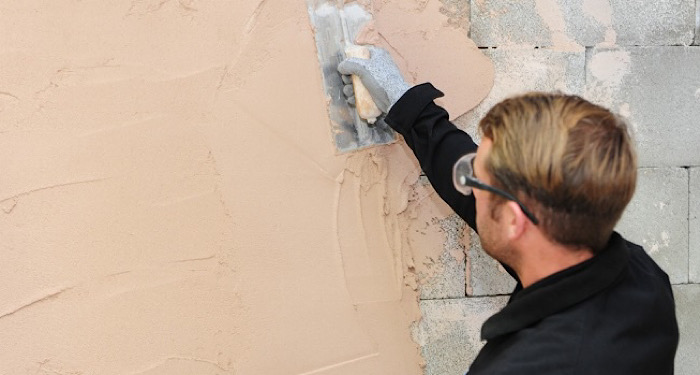
Once the first coat of plaster is completed, it should then be left for 20 minutes before it is then skimmed and smoothed out, so there are no bumps. A second coat can then be added; however, this will be a much thinner coat than the first.
To finish off the plastering job, water will be applied to the surface to smooth out any bumps that may be on it. Sanding paper can then be used to smooth out and remove any excess plaster. Once plastering is completed, the wall can be re-decorated.
Pros:
- Great option after your damp course has been completed
Cons:
- Can be expensive on top of the damp course
Is DPC Different in the Construction Industry?
A DPC isn’t different in the construction industry but there are multiple ways to damp proof a building. Some of these include:
- Damp proof membrane
- DPC injection
- Vertical DPC
- Chemical DPC injection
- Electro osmotic course
Out of the above processes, the electro-osmotic method is the least common. This technique uses an innovative electrical solution to tackle rising damp, especially in cases where traditional methods have been tried unsuccessfully.
Benefits of Damp Proofing
There are several benefits to damp proofing your home. Below is a list of reasons why damp proofing your home is highly recommended:
Prevent Health Issues
Health issues can occur if damp proofing is avoided. Mould and mildew thrive in damp conditions, and mould can cause many health concerns, including wheeziness, headaches, coughing, and throat and eye irritations.
Damp-proofing your home will eliminate any potential for damp-related health issues and will help to keep your family safe and healthy.
Improve The Appearance of Your Home
Damp build-ups can cause unpleasant dark patches on your walls that can look very unsightly. It can also cause wallpaper to wilt and peel and can cause the paint to crack.
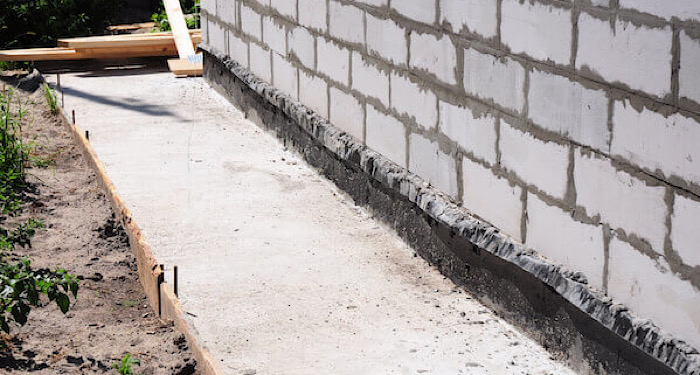
Damp-proofing your home will ensure this doesn't happen and you can decorate without the worry of any damp-related appearance issues.
Avoid Unpleasant Smells
Untreated damp problems can lead to unpleasant smells, especially when there is a lot of mould present. If left untreated, the smell of damp and mould can become overwhelming in your home.
If you go through a damp treatment process, this will eliminate all damp smells from within your home.
Avoid Reducing the Value of Your Home
If damp problems are left untreated, they can worsen over time and become costly to repair which can impact the value of your property.
Persistent damp issues can discourage potential buyers and reduce the market value of your property. Getting professional damp proofing treatment can help protect your home’s value and make it more attractive to future buyers.
Ongoing damp issues can also reduce the market value of your property, as people may not wish to buy or will request a reduction in the cost in order to fix issues themselves.
Getting professional damp proofing treatment can help protect your home’s value and make it more attractive to future buyers.
Prevent Structural Problems
Leaving damp areas untreated can cause damage to the timbers in the structure of your property. Damp can cause the wood in your structural timbers to rot and potentially collapse. Damp-proofing your home can prevent any chances of rotting from occurring.
FAQs
Q: What causes rising damp in internal walls?
A: Rising damp isn't due to leaking pipework but occurs when moisture from the ground is drawn up through the walls, and is often down to a faulty (or non-existent) damp-proof course. Proper rising damp treatment can help prevent further damage.
Q: How do you seal a damp wall before painting?
A: You can seal your walls with a damp-proof sealant or damp-proof paint. This can act as a base layer before you paint over the walls for decorative purposes. Damp proofing walls before painting is a good preventative measure for potential damp.
Q: What causes damp on house walls?
A: Damp is usually caused by a build-up of moisture on the walls of your home. It can occur more commonly in some areas where moisture is present more commonly, such as in the kitchen or bathroom of your home.
Q: Is rising damp covered on home insurance?
A: In most cases, rising damp is not covered on your home insurance. However, every insurance policy is different, and you should check yours just to be sure.
Q: Can damp cause health problems?
A: Leaving damp untreated can lead to a number of health issues, including coughing, wheezing, congestion, and an irritated throat or eyes. It can also cause chronic health issues, such as reduced lung function or asthma.

